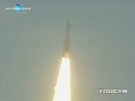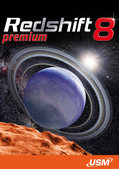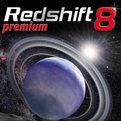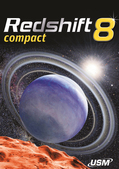Herschel and Planck
Herschel and Planck commissioning has begun
After a perfect injection by the Ariane 5 launcher on May 14, the critical Launch and Early Orbit Phase (LEOP) for Herschel and Planck has started to wind down, while commissioning of the scientific instruments and subsystems on both spacecraft has begun.
Herschel and Planck are functioning nominally and are now en route to their final orbits around the second Lagrange point of the Sun-Earth system (L2), a point in space 900,000 miles from Earth on the night-side.
The additional ground stations that enabled near-continuous contact between mission controllers and Herschel and Planck during LEOP have been released; the two are now communicating via their nominally assigned stations, ESA’s New Norcia and Cebreros deep space stations, respectively.
Shortly after launch, both spacecraft separated according to plan. This triggered the execution of automatic sequences on board, including acquisition of the spacecraft’s orientation in space, configuration of the data handling system and switch-on of the high-frequency radio transmitters.
The first signals from both spacecraft were acquired by ESA’s New Norcia and Perth. Shortly afterward, telemetry was received confirming good health for both spacecraft. Both had acquired their nominal sun-pointing attitude and a telemetry check-out performed by the Mission Control Team confirmed their overall status as nominal.
All the operations planned for both spacecraft for the Launch and Early Orbit Phase have been completed successfully, and all time-critical procedures were completed on schedule or sooner than expected, including the SPIRE (Spectral and Photometric Imaging Receiver) launch lock release on Herschel and the activation of the HFI (High Frequency Instrument) 4K cooler on Planck.
The excellent injection provided by Ariane 5 into L2 transfer orbit means that only moderate trajectory correction maneuvers – during which the thrusters are fired to change the spacecraft’s direction or speed - will be required giving ground controllers a larger margin of fuel for the scientific part of the mission.
On May 15 both spacecraft successfully completed their first correction maneuvers.
Subsystem commissioning began on May 15 for both satellites, and telescope and payload module cool down started in parallel on both spacecraft. The HFI instrument on Planck has been switched on, ready to be cooled down to its final operational temperature of only 0.1K.
Herschel is now on a trajectory that will lead it to a large orbit around L2. Planck, which will operate from a smaller orbit, will still need a mid-course correction and an orbit-insertion maneuver, currently planned for June 5 and July 2 respectively.
ESA
The additional ground stations that enabled near-continuous contact between mission controllers and Herschel and Planck during LEOP have been released; the two are now communicating via their nominally assigned stations, ESA’s New Norcia and Cebreros deep space stations, respectively.
Shortly after launch, both spacecraft separated according to plan. This triggered the execution of automatic sequences on board, including acquisition of the spacecraft’s orientation in space, configuration of the data handling system and switch-on of the high-frequency radio transmitters.
The first signals from both spacecraft were acquired by ESA’s New Norcia and Perth. Shortly afterward, telemetry was received confirming good health for both spacecraft. Both had acquired their nominal sun-pointing attitude and a telemetry check-out performed by the Mission Control Team confirmed their overall status as nominal.
All the operations planned for both spacecraft for the Launch and Early Orbit Phase have been completed successfully, and all time-critical procedures were completed on schedule or sooner than expected, including the SPIRE (Spectral and Photometric Imaging Receiver) launch lock release on Herschel and the activation of the HFI (High Frequency Instrument) 4K cooler on Planck.
The excellent injection provided by Ariane 5 into L2 transfer orbit means that only moderate trajectory correction maneuvers – during which the thrusters are fired to change the spacecraft’s direction or speed - will be required giving ground controllers a larger margin of fuel for the scientific part of the mission.
On May 15 both spacecraft successfully completed their first correction maneuvers.
Subsystem commissioning began on May 15 for both satellites, and telescope and payload module cool down started in parallel on both spacecraft. The HFI instrument on Planck has been switched on, ready to be cooled down to its final operational temperature of only 0.1K.
Herschel is now on a trajectory that will lead it to a large orbit around L2. Planck, which will operate from a smaller orbit, will still need a mid-course correction and an orbit-insertion maneuver, currently planned for June 5 and July 2 respectively.
ESA
Herschel and Planck
Herschel and Planck commissioning has begun
After a perfect injection by the Ariane 5 launcher on May 14, the critical Launch and Early Orbit Phase (LEOP) for Herschel and Planck has started to wind down, while commissioning of the scientific instruments and subsystems on both spacecraft has begun.
Herschel and Planck are functioning nominally and are now en route to their final orbits around the second Lagrange point of the Sun-Earth system (L2), a point in space 900,000 miles from Earth on the night-side.
The additional ground stations that enabled near-continuous contact between mission controllers and Herschel and Planck during LEOP have been released; the two are now communicating via their nominally assigned stations, ESA’s New Norcia and Cebreros deep space stations, respectively.
Shortly after launch, both spacecraft separated according to plan. This triggered the execution of automatic sequences on board, including acquisition of the spacecraft’s orientation in space, configuration of the data handling system and switch-on of the high-frequency radio transmitters.
The first signals from both spacecraft were acquired by ESA’s New Norcia and Perth. Shortly afterward, telemetry was received confirming good health for both spacecraft. Both had acquired their nominal sun-pointing attitude and a telemetry check-out performed by the Mission Control Team confirmed their overall status as nominal.
All the operations planned for both spacecraft for the Launch and Early Orbit Phase have been completed successfully, and all time-critical procedures were completed on schedule or sooner than expected, including the SPIRE (Spectral and Photometric Imaging Receiver) launch lock release on Herschel and the activation of the HFI (High Frequency Instrument) 4K cooler on Planck.
The excellent injection provided by Ariane 5 into L2 transfer orbit means that only moderate trajectory correction maneuvers – during which the thrusters are fired to change the spacecraft’s direction or speed - will be required giving ground controllers a larger margin of fuel for the scientific part of the mission.
On May 15 both spacecraft successfully completed their first correction maneuvers.
Subsystem commissioning began on May 15 for both satellites, and telescope and payload module cool down started in parallel on both spacecraft. The HFI instrument on Planck has been switched on, ready to be cooled down to its final operational temperature of only 0.1K.
Herschel is now on a trajectory that will lead it to a large orbit around L2. Planck, which will operate from a smaller orbit, will still need a mid-course correction and an orbit-insertion maneuver, currently planned for June 5 and July 2 respectively.
ESA
The additional ground stations that enabled near-continuous contact between mission controllers and Herschel and Planck during LEOP have been released; the two are now communicating via their nominally assigned stations, ESA’s New Norcia and Cebreros deep space stations, respectively.
Shortly after launch, both spacecraft separated according to plan. This triggered the execution of automatic sequences on board, including acquisition of the spacecraft’s orientation in space, configuration of the data handling system and switch-on of the high-frequency radio transmitters.
The first signals from both spacecraft were acquired by ESA’s New Norcia and Perth. Shortly afterward, telemetry was received confirming good health for both spacecraft. Both had acquired their nominal sun-pointing attitude and a telemetry check-out performed by the Mission Control Team confirmed their overall status as nominal.
All the operations planned for both spacecraft for the Launch and Early Orbit Phase have been completed successfully, and all time-critical procedures were completed on schedule or sooner than expected, including the SPIRE (Spectral and Photometric Imaging Receiver) launch lock release on Herschel and the activation of the HFI (High Frequency Instrument) 4K cooler on Planck.
The excellent injection provided by Ariane 5 into L2 transfer orbit means that only moderate trajectory correction maneuvers – during which the thrusters are fired to change the spacecraft’s direction or speed - will be required giving ground controllers a larger margin of fuel for the scientific part of the mission.
On May 15 both spacecraft successfully completed their first correction maneuvers.
Subsystem commissioning began on May 15 for both satellites, and telescope and payload module cool down started in parallel on both spacecraft. The HFI instrument on Planck has been switched on, ready to be cooled down to its final operational temperature of only 0.1K.
Herschel is now on a trajectory that will lead it to a large orbit around L2. Planck, which will operate from a smaller orbit, will still need a mid-course correction and an orbit-insertion maneuver, currently planned for June 5 and July 2 respectively.
ESA









